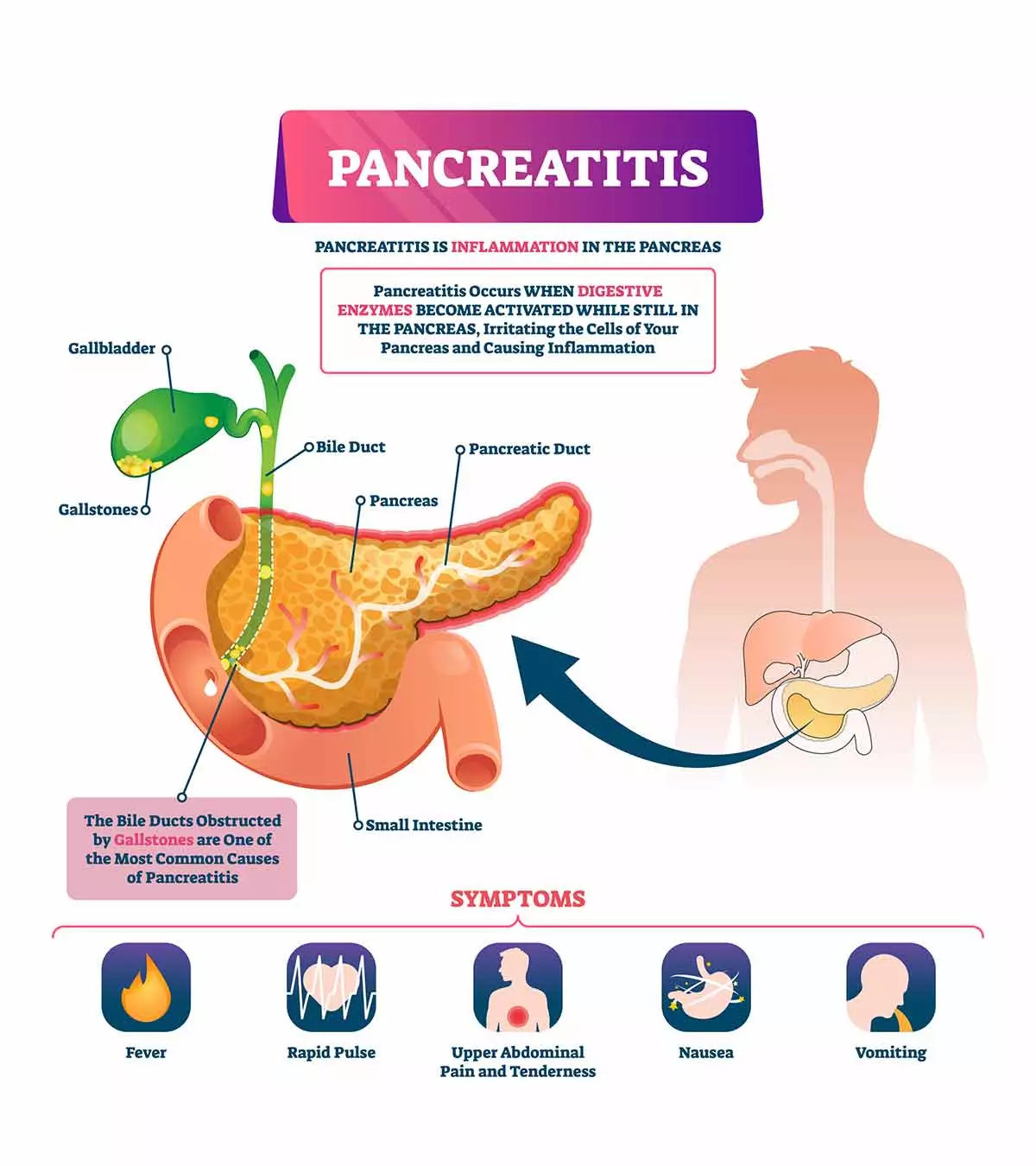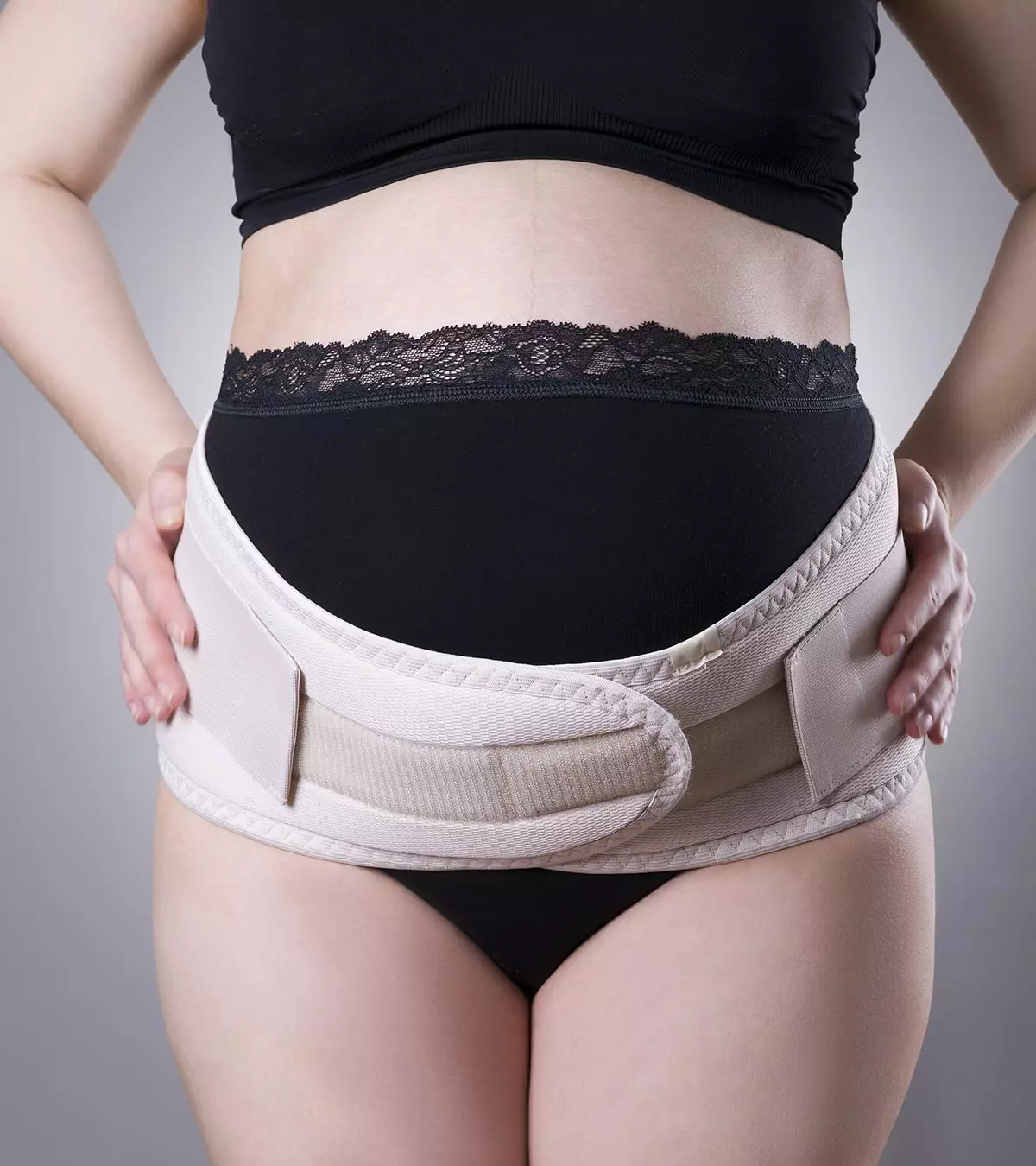

Image: Shutterstock
One of the common causes behind the difficulty in conceiving is fallopian tube blockage. If you are going through the same, knowing the signs of blocked fallopian tubes may help you seek treatment in time. A blockage in these tubes interferes with the process of conception and can reduce your chances of getting pregnant. But, this can be treated with awareness and timely diagnosis.
In this post, we will help you understand the phenomenon, including its causes, symptoms, types, and treatment options.
What Does Blocked Fallopian Tubes Mean?
Image: Shutterstock
The Fallopian tubes play a key role in transporting and fertilizing eggs for conception. But these tubes can be damaged or blocked due to certain reasons causing narrowing, dilation, inflammation, or obstruction in the tubes. Approximately one-third of women could have a blockage in their tubes, which makes it one of the common reasons for infertility (1) (2).
A blockage in the fallopian tubes can occur in any of the three parts: proximal part (end of the tube near uterus), distal part (near the ovary, at the end), or middle part. It is not easy for a woman to figure out if her tubes are blocked or damaged. But looking for signs and symptoms could help you figure out if you should visit a doctor.
What Are The Signs/Symptoms Of Blocked Fallopian Tubes?
Usually, it is difficult to diagnose fallopian tube blockage without medical intervention. However, your body would show some signs that may help you to identify the problem.
You may experience mild or severe pain in the lower abdominal region. Some women may experience this pain only during the menstrual cycle but in others, the pain could be persistent.
A few other signs could be painful periods, vaginal discharge, and pain while urinating or having sex. If the pain lasts for a long time, consult your doctor for diagnosis.
What Are The Causes Of Fallopian Tubes Blockage?
Either one fallopian tube or both the tubes can get blocked. Following are a few reasons for blocked fallopian tubes.
- Pelvic inflammatory disease (PID): Pelvic infections spreading upwards towards the uterus and pelvis from the lower genital tract could be one of the causes of pelvic inflammatory disease. It affects the woman’s tubes and surrounding organs in the pelvis. One in eight women has a history of PID, and results in the formation of scar tissue both inside and outside the tubes, leading to blockage (3).
- Sexually transmitted infections: Women with a history of STIs or a diagnosis of STDs such as Chlamydia trachomatis or Gonorrhea may have damaged or blocked tubes (4).
- Abdominal diseases or surgeries: Some common diseases such as colitis and appendicitis could cause blocking or scarring of the fallopian tubes. Additionally, any previous surgeries in the abdomen or pelvic region could affect the tubes leading to blockage, displacement, inflammation, or damage (5).
- Hydrosalpinx: When the end part of the fallopian tubes (near the ovary) becomes swollen and gets filled with a fluid, it results in a condition called hydrosalpinx. This condition prevents the movement of eggs through the tubes, thus causing infertility (6).
- Endometriosis: This is when the tissues in the uterus lining grow in the pelvis and ovaries around the fallopian tubes, causing a blockage as well as loss of its movement, which is necessary for egg pickup by the tube. This makes conception difficult (7).
- Ectopic pregnancy: Ectopic pregnancy is when the fertilized egg gets implanted outside the uterus, most likely in the Fallopian tubes. This can cause damage or blocking of the tubes.
Any of these causes responsible for blocking your fallopian tubes would have an adverse effect on your fertility.
How Does Blocked Fallopian Tubes Affect Fertility?
The fallopian tubes are among the three main parts of the female reproductive system, the other two being ovaries and uterus. When there is a blockage in the fallopian tubes, the eggs cannot pass from the ovaries and through the tube to meet the sperm, resulting in what is medically called tubal factor infertility.
Around 25 to 30% of all infertility cases are due to fallopian tube blockage (8). Whether it is a blockage, scarring or damage in one tube or two tubes can vary amongst women.
Types Of Blockages In The Fallopian Tubes
The type of blockage depends on what has caused the blockage and where the blockage has occurred. These can be determined through medical examination (9).
- Proximal tubal occlusion is when the end part of the tube, near the uterus also called the cornua is blocked. Scarring, inflammation, endometriosis, fibroid, or mucus plugs cause this type of blockage in the tubes.
- It is a midsegment blockage when the middle part of the tubes is blocked due to any procedure or infection.
- Distal tubal consists of infundibulum and fimbria. Occlusion of this end occurs due to the fimbrias getting stuck to structures around or within themselves and are often engulfed or sucked in within the tube. In addition, inflammation of this end causing full or partial closure leads to tubal fluid or inflammatory fluid to collect in the tube distending it. It is also called hydrosalpinx, and occurs when the end part of the tube, near the ovaries, is blocked.
A proper diagnosis will help the professional know about the type and severity of the blockage.
How Are Blocked Fallopian Tubes Diagnosed?
There are various tests and procedures to examine the blockage of the fallopian tubes.
- Hysterosalpingogram or HSG: In this procedure, the clinician will push a radio opaque dye through the cervix into the uterus to go across the tube into the abdominal cavity. This gives the doctor a chance to examine the blockage in the fallopian tubes. It will also help in detecting distal or proximal tubal occlusion. Based on the result, the management procedure is determined (10).
- Sono-salpingography: It is known to be a convenient, effective, simple and less invasive procedure to evaluate the condition of the fallopian tubes. However, if blockage is suspected, then this procedure should be followed by laparoscopy to confirm the blockage (11).
- Laparoscopy: This procedure allows the doctor to look at the reproductive system directly and detect blockage of the tubes. Laparoscopic chromo-pertubation is a standardized procedure, where a blue-colored dye solution is passed from the cervix into the uterus and visualized through the laparoscope directly to know if the fallopian tubes are blocked, swollen or damaged (12).
The treatment is determined based on the type and severity of the blockage.
How Are Blocked Fallopian Tubes Treated?
The treatment for blocked Fallopian tubes can be medicinal or surgical. The treatment is based on the severity of the condition.
- Nonsurgical fallopian tube recanalization: These methods use radiologically guided methods of tubal cannulation. This method is known to be effective in treating proximal tubal obstruction and has led to successful pregnancies in many cases (13)
- Laparoscopic salpingostomy: Salpingostomy is usually recommended in the case of hydrosalpinx. It is done laparoscopically now but, earlier the same procedure was done by laparotomy, which means opening the abdomen. A stoma is created near the ovary to drain the fluid, thereby unblocking the tubes (14)
- Fimbrioplasty: It is a laparoscopic method, which rebuilds the fringed ends of the fallopian tubes. It is performed when a minimal distal blockage has been detected (15).
Thanks to these procedures, blocked Fallopian tubes can be fixed in many cases, and you will be able to get pregnant if all goes well. Just make sure you watch out for any signs that could indicate a block in the Fallopian tubes and consult a doctor immediately for timely treatment.
Frequently Asked Questions
1. Can blocked fallopian tubes be seen on ultrasound?
According to the American College of Obstetrics and Gynecology (ACOG), sonohysterography, a special type of ultrasound, can help identify whether the fallopian tubes are open or closed (16).
2. Can I get pregnant with blocked fallopian tubes?
According to the American Society For Reproductive Medicine, blockage or damage to the fallopian tubes can stop a woman from getting pregnant. Besides, it can increase the risk of ectopic pregnancy (17). However, a woman who ovulates regularly may conceive if one of her fallopian tubes is open.
Abnormal vaginal discharge, constant, extreme pain in the abdomen during menstruation, and urination could be some of the signs of blocked fallopian tubes. Blockage in fallopian tubes may lead to female infertility and lower your chances of conceiving. It could be caused due to infections, abdominal ailments, surgeries, etc. If you notice any signs of fallopian tube blockage, it is best to consult your gynecologist. They will analyze your condition and guide you with a suitable treatment based on the type and severity of your blockage.
References
1. Fertility & pregnancy. Jean Hailes
2. M. Patil; Assessing tubal damage; Journal of Human Reproductive Sciences (2009)
3. Pelvic Inflammatory Disease (OID) – CDC Fact Sheet; Centers for Disease Control and Prevention
4. Y. Khalaf; Tubal subfertility: ABC of subfertility; BMJ Publishing Group (2003)
5. What causes female infertility; Stanford University
6. Hydrosalpinx (Blocked Fallopian Tube); Reproductive Science Center Of New Jersey
7. Endometriosis And Fertility: Three Reasons For Women To Have Hope; Penn Medicine (2016)
8. Tubal Factor Infertility (Fallopian Tube Obstruction); Columbia Doctors
9. Tubal Disease; Tennessee Reproductive Medicine
10. Fallopian Tube Testing; Duke Fertility Center
11. K. Sambharam, S. Rode, and A. Bhalerao; Comparison of sonosalphingography and laparoscopy in evaluation of tubal potency in infertility patients; International Journal of Scientific and research Publications (2015)
12. Laparoscopy and Hysteroscopy (booklet); American Society for Reproductive medicine
13. A. S. Thurmond and J. Rosch; Nonsurgical fallopian tuber recanalization for treatment of infertility; Radiology (1990)
14. A. Zarei, W. Al-Ghafri, and T. Tulandi; Tubal Surgery; Clinical Obstetricsand Gynecology (2009)
15. Tubal Factor Infertility; Women & Infants Fertility Center
16. Sonohysterography; American College of Obstetrics and Gynecology
17. What Do I Need to Know About Conceiving After Tubal Surgery?; American Society For Reproductive Medicine
Community Experiences
Join the conversation and become a part of our nurturing community! Share your stories, experiences, and insights to connect with fellow parents.
Read full bio of Dr. Abha Majumdar
Read full bio of Rebecca Malachi















